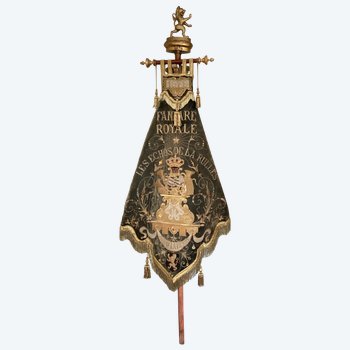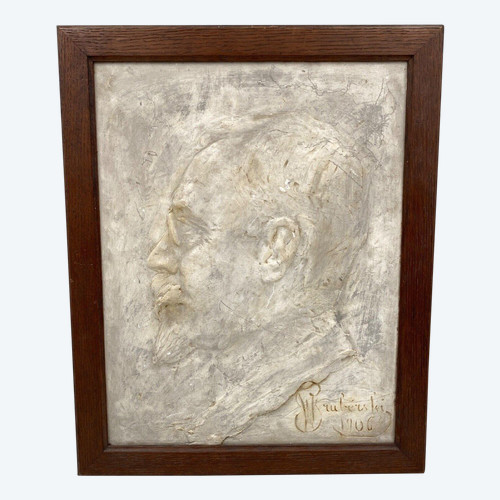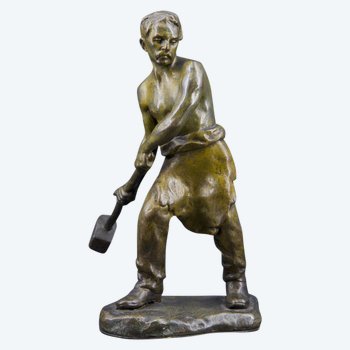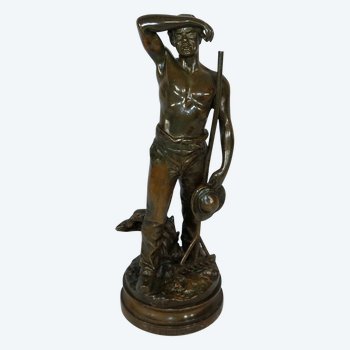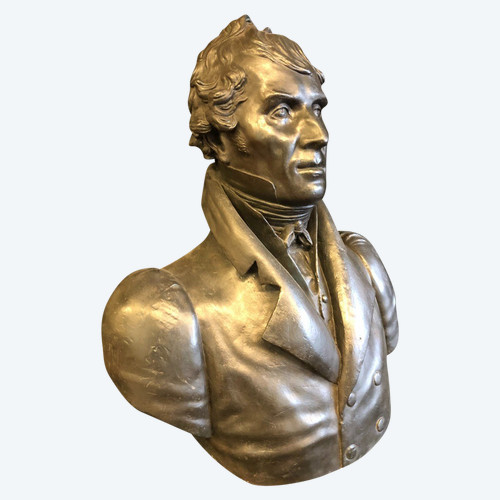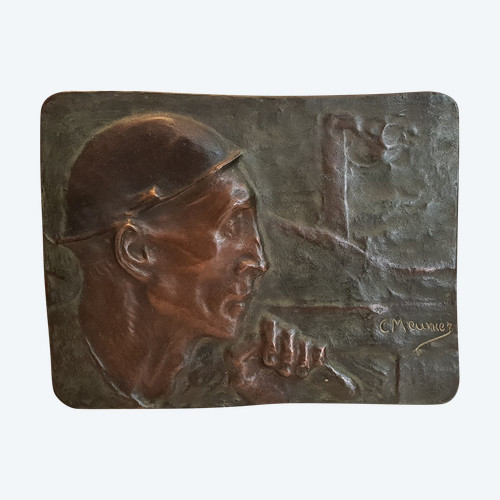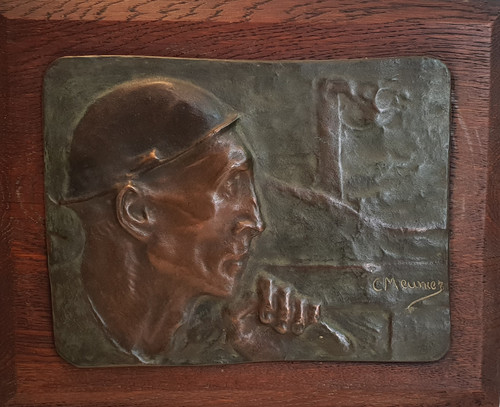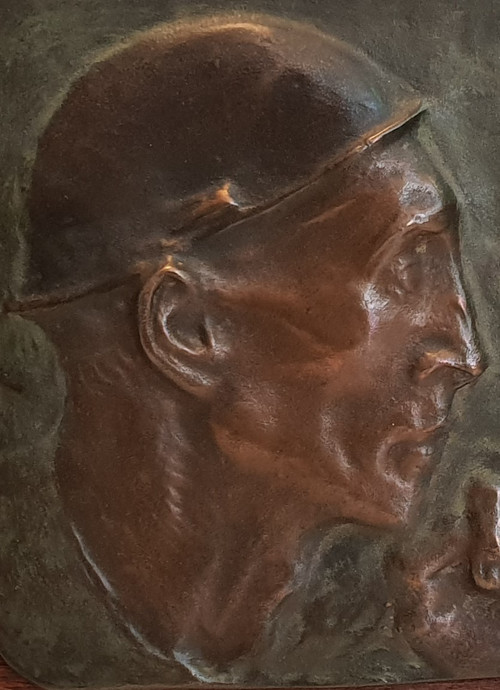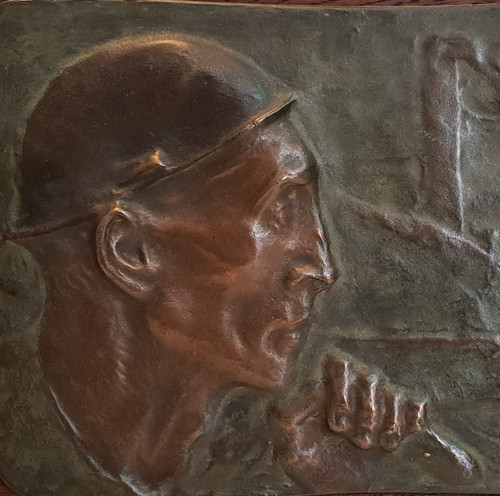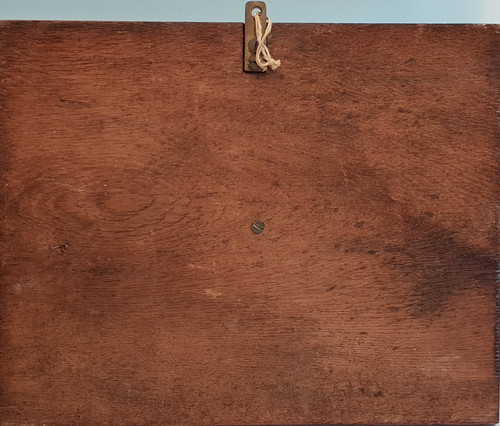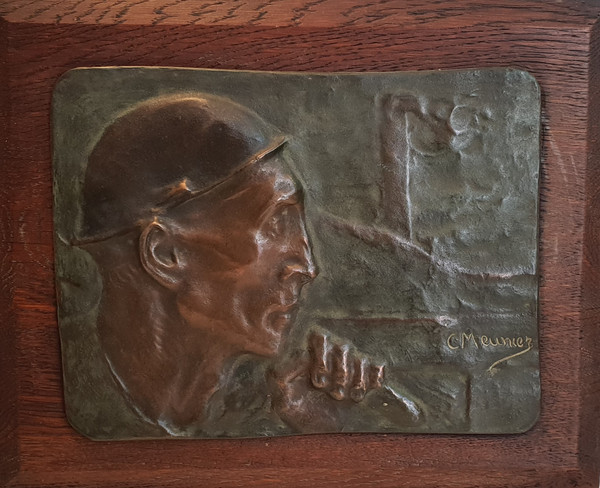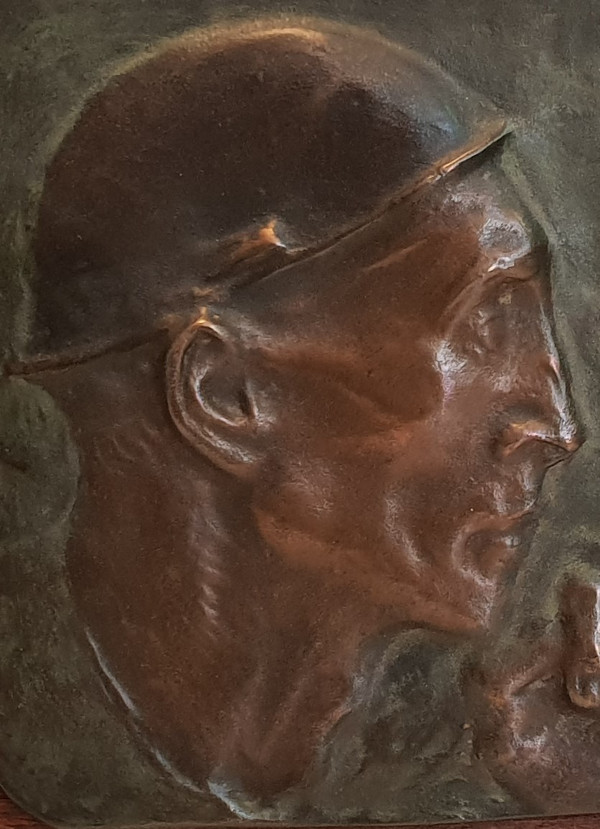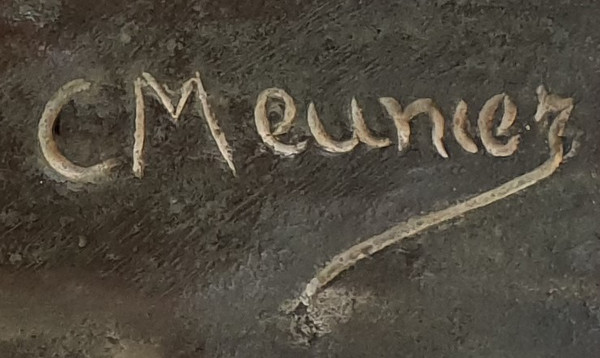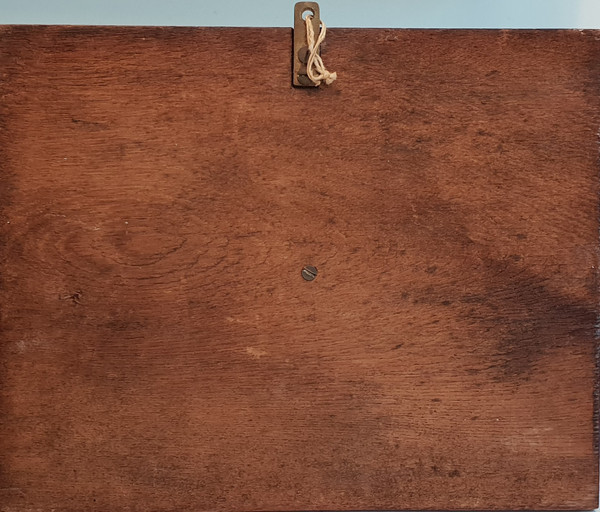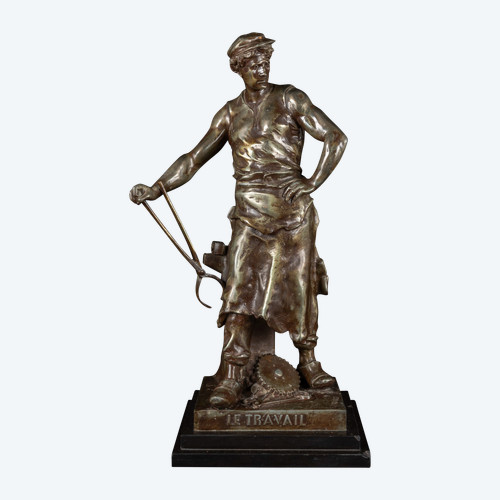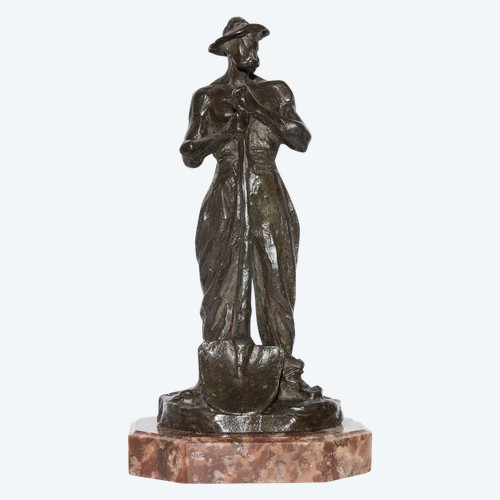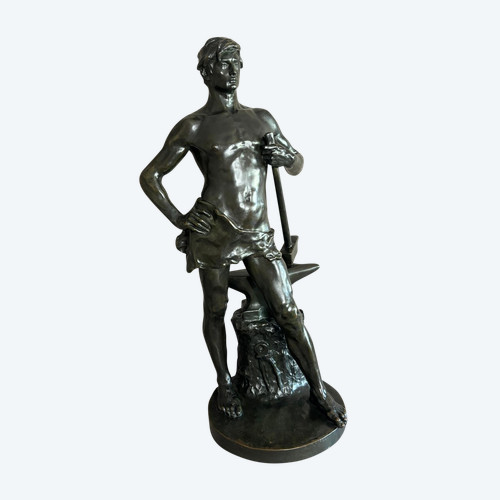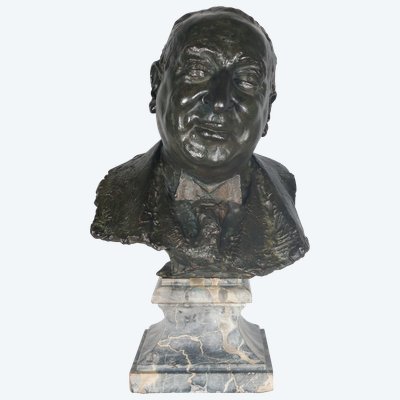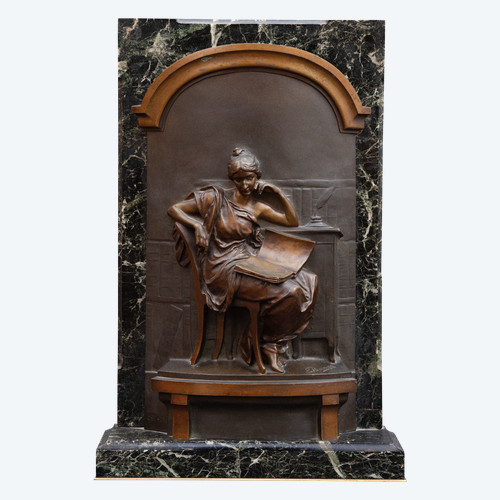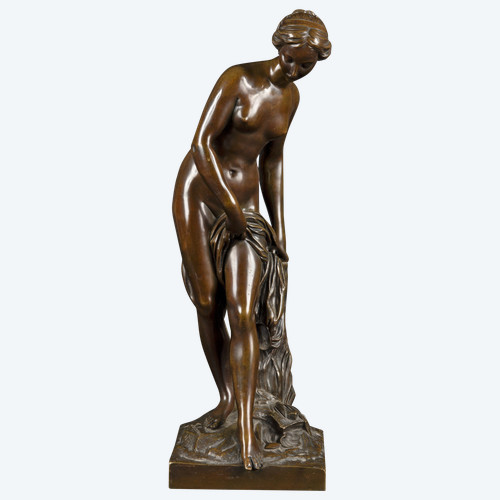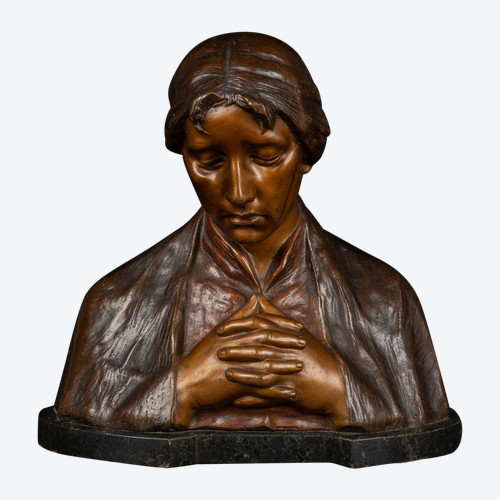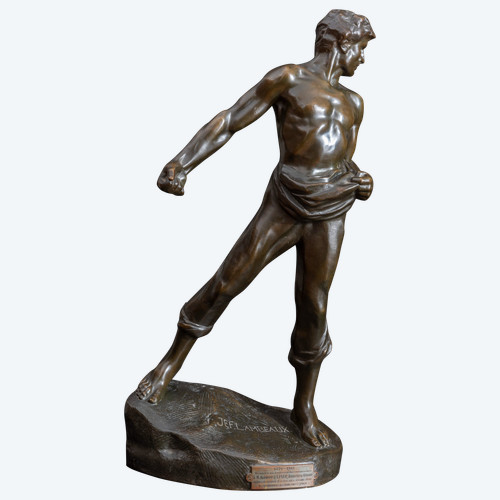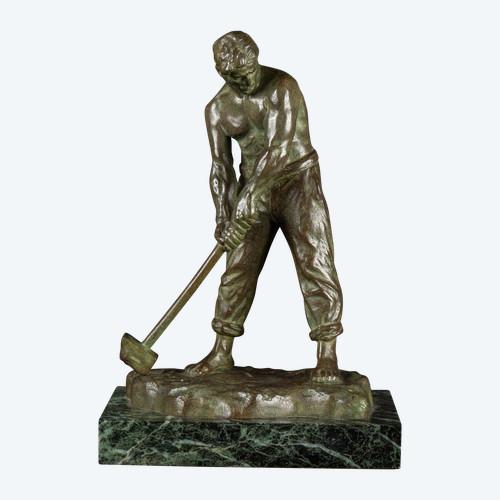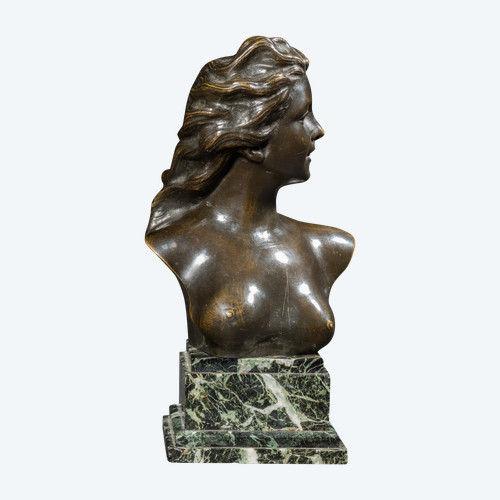This description has been translated and may not be completely accurate. Click here to see the original
In the dark twists of a coal mine stands a man with a face marked by effort and suffering. His emaciated profile bears witness to years of relentless toil, years spent extracting the earth's riches for the masters of industry. In his weary eyes lies the tale of an entire laboring class, sacrificed on the altar of progress and greed. The Miner's Head, a masterful creation imbued with Meunier's social art, emerges from the shadows of oblivion to remind us of the dignity stolen from those who toiled in the earth's bowels. Commissioned by coal merchant and patron Edouard Taymans in 1904, this striking work is a silent cry of despair and resilience.
In the background, the menacing silhouette of a factory chimney and the sterile mound of a slag heap evoke the relentless reality of miners' daily lives. Every line, every crevice of the bas-relief sculpted by Meunier is infused with the sweat and blood of those who paid the price of their lives for the profits of the powerful. This miner's head exists in various forms - plaster, bronze, sandstone - but in each, it bears the indelible imprint of the workers' struggle. It recalls Meunier's earlier sculptures, such as the Miners Coming Out of the Pit exhibited at the Salon in 1893, where figures exhausted by the toil of the Black Country are immortalized in bronze, poignant testimonies of an era of misery and shattered hope.
Constantin Meunier, a Belgian artist, transitioned from religious painting to a realistic and social representation of the working class, influenced by his exploration of the Borinage, a mining region in Belgium. This journey deeply impacted him, prompting him to capture the tragic beauty of industrialization. His dark and dramatic paintings, along with his expressive sculptures, depict the new realities of the industrial era. His time in Spain further solidified his commitment to the working class, despite external artistic influences. Van Gogh praised him, acknowledging his unique talent. Unfortunately, Meunier faced personal tragedies, losing both of his sons. Nonetheless, he was honored by renowned artistic institutions and influential artists such as Rodin. His artistic legacy is preserved at the Constantin-Meunier Museum in Ixelles, with his sculptures adorning public spaces in Belgium and Europe. As a Freemason, he was also involved in philanthropic activities.
Ref: BF7R0UHQIR
 Garter Ring In Gold Sapphires And Diamonds
1.190 € EUR
Garter Ring In Gold Sapphires And Diamonds
1.190 € EUR



